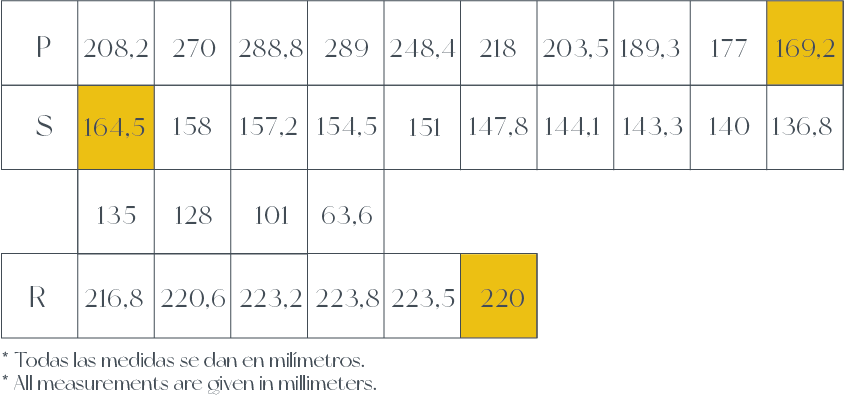1st year female specimen
1.- Left wing primaries. 2.- Details of the inner vane of P6, P7, P8, P9, and P10. 3.- Details of the inner vane of P1, P2, P3, P4, and P5. 4.- Details of the inner vane of P7, P8, P9, and P10. 5.- Details of the tip of P1, P2, P3, and P4. 6.- Left wing primaries. 7.- Details of the primary calamus. 8.- Details of the outer vane of the outer primaries. 9.- Details of the outer vane and tip of the inner primaries. 10.- Details of the tip of the outer primaries. 11.- Secondaries (S14-S8). 12.- Secondaries (S7-S1). 13.- Details of the inner vane of S4, S3, S2, and S1. 14.- Details of the inner vane of S7, S6, and S5. 15.- Details of the inner vane of S14, S13, S12, S11, and S10. 16.- Left wing secondaries and tertials. 17.- Details of the secondaries calamus. 18.- Details of the tip of the outer secondaries. 19.- Details of the tip of the central secondaries. 20.- Details of the outer vane of the secondaries. 21.- Details of the tertials. 22.- Left wing primaries, secondaries, and tertials. 23.- Left wing primaries, secondaries, and tertials. 24.- Primaries, secondaries, and tertials. Primary coverts + greater coverts. 25.- Details of the primary coverts. 26.- Details of the tip of the primary coverts. 27.- Details of the greater coverts. 28.- Details of the tip of the greater coverts. 29.- Primaries, secondaries, and tertials. Primary coverts + greater coverts + median coverts. 30.- Details of the median coverts. 31.- Primaries, secondaries, tertials. Primary coverts and secondary coverts (G, M, and L). Alulas. 32.- Details of the lesser and median coverts. 33.- Details of the secondary coverts. 34.- Primary coverts. 35.- Greater coverts. 36.- Alulas. 37.- Lesser coverts. 38.- Rectrices. 39.- Details of the inner vane of the rectrices. 40.- Details of the rectrices. 41.- Details of the rectrices calamus. 42.- Details of the rectrices. 43.- Details of the tip of the rectrices. 44.- Details of the rectrices. 45.- Rectrices. 46.- Rectrices + uppertail coverts. 47.- Details of the uppertail coverts. 48.- Details of the uppertail coverts. 49.- Uppertail coverts. 50.- Rectrices + undertail coverts. 51.- Details of the undertail coverts. 52.- Undertail coverts. 53.- Mounting of the left scapula. 54.- Feathers of the left scapula. 55.- Left wing separators. 56.- Top: Greater primary under coverts. Bottom: Median primary under coverts. 57.- Greater secondary under coverts. 58.- Feathers of the left axilla. 59.- Mounting and feathers of the back. 60.- Mounting and feathers of the chest. 61.- Mounting and feathers of the crown. 62.- Feathers of the left leg.


